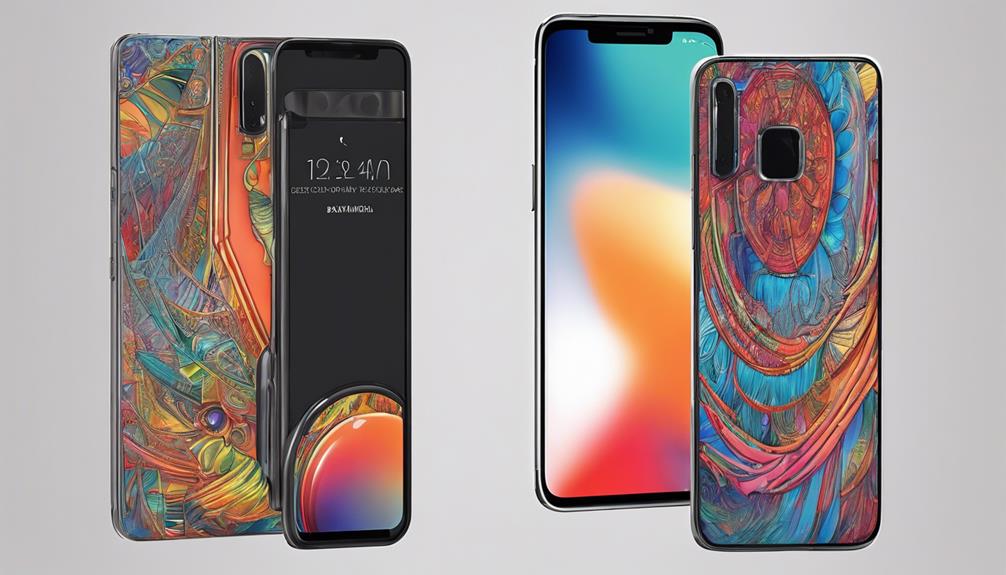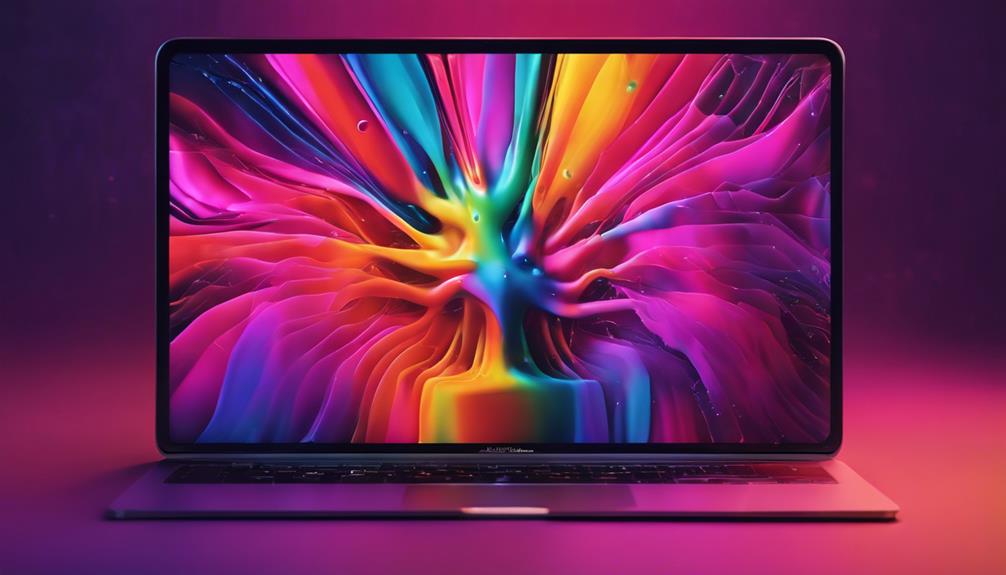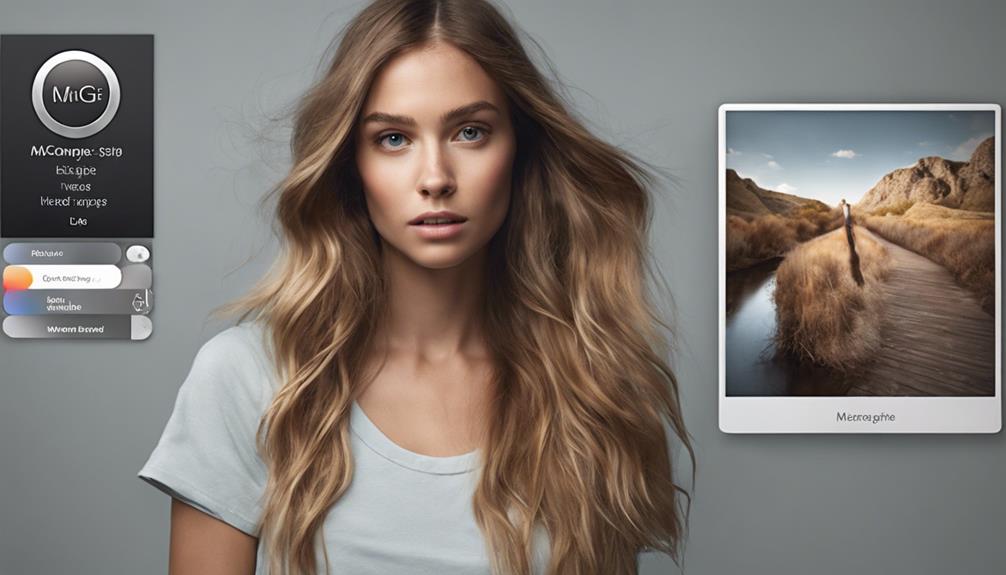Imagine easily editing your photos with just a simple voice command to your device. Apple’s latest AI image editing tool promises to do just that and more. Its ability to understand and execute complex editing commands through simple voice prompts represents a significant shift in how we interact with photo editing apps, thanks to the MGIE model.
As we explore the intricacies of this groundbreaking tool, we uncover a world where creativity meets technological innovation, paving the way for a new era in visual storytelling and content creation.
Key Takeaways
- Apple's MGIE model revolutionizes image editing with text-based commands.
- MGIE stands out for visual-aware editing capabilities.
- Apple integrates AI with its MLX framework for enhanced device features.
- Collaboration with UC Santa Barbara enhances Apple's AI contributions.
Apple's Breakthrough in Image Editing
Apple's groundbreaking foray into image editing with the MGIE model has revolutionized the way users approach photo enhancement tasks. This AI innovation from Apple has opened up a realm of possibilities for creative editing techniques.
By interpreting user descriptions and implementing edits visually, the MGIE model allows for seamless editing experiences, catering to both simple and complex tasks. Apple's commitment to enhancing the image editing landscape is evident through the introduction of the MGIE model, which combines advanced AI technology with user-friendly features.
This model represents a significant step forward in AI-guided image editing, offering users a powerful tool to manipulate and enhance their photos with efficiency and precision.
MGIE Model Features and Capabilities

The MGIE model introduces a cutting-edge approach to image editing, enhancing user experiences through advanced visual interpretation capabilities. This innovative model offers a range of features and capabilities that set it apart in the realm of AI image editing tools:
- Image enhancement tools for refining photos with precision.
- Creative tools enabling users to unleash their artistic vision.
- User-friendly interface for intuitive navigation and seamless editing.
- Real-time editing functionality for instant adjustments and feedback.
- Multimodal language models integration for comprehensive editing tasks.
These elements collectively contribute to making the MGIE model a significant advancement in AI-guided image editing, empowering users with efficient and powerful editing tools.
AI Image Editing Landscape Comparison
Comparing the current landscape of AI image editing tools reveals distinct features and functionalities that cater to varying user preferences and editing needs. In the table below, we outline key aspects of notable AI image editing tools, focusing on visual editing capabilities and artificial intelligence integration:
| AI Image Editing Tool | Visual Editing Features |
|---|---|
| Apple's MGIE Model | Visual-aware editing approach |
| OpenAI's DALL-E 3 | Emphasis on creative generation |
| Adobe's Firefly AI | Specializes in adding generated backgrounds |
| Other Tools | Range of features catering to diverse editing needs |
| Extent of AI integration for efficient editing |
Each tool brings unique strengths to the table, with Apple's MGIE model standing out for its innovative visual editing techniques driven by artificial intelligence.
Apple's Advancements in AI Integration

Moving from the landscape comparison of AI image editing tools, we can observe Apple's significant strides in integrating AI into their latest advancements. Apple has been at the forefront of AI innovation, particularly in machine learning integration. Here are some key points highlighting Apple's advancements in AI integration:
- Introduction of the MLX machine learning framework for Apple Silicon chips.
- Aim to enhance devices with more AI features.
- Venturing into generative AI with the MGIE model.
- Contribution to the vision-and-language research field.
- Establishment of collaboration with the University of California, Santa Barbara for the MGIE model.
Apple's dedication to advancing AI technologies showcases a commitment to pushing boundaries and exploring the possibilities of machine learning integration.
Collaboration With University for MGIE Model
In collaboration with the University of California, Santa Barbara, Apple developed the MGIE model for advanced image editing tasks. This partnership led to significant research advancements in the field of AI-guided image editing, showcasing the power of academia-industry collaborations. The University's expertise in machine learning and computer vision complemented Apple's innovative approach, resulting in the creation of a cutting-edge tool for visual content manipulation. Below is a table highlighting key aspects of the collaboration:
| Aspect | Description |
|---|---|
| Research Focus | Advanced image editing tasks |
| Key Contributions | Combining multimodal language models for editing |
| Impact | Significant advancement in AI-guided image editing |
| Collaboration Type | Industry-academia partnership |
| Outcome | Development of the MGIE model for enhanced image editing capabilities |
Noteworthy Tech News Highlights

Our exploration into the latest tech news landscape unveils significant developments in the industry, ranging from Google's Gemini assistant insights to upcoming limited-edition Lego sets and Google One's milestone achievement.
- Google's Gemini assistant provides valuable insights into the future of AI.
- Anticipate limited-edition Lego sets like an Elven Castle and a Sushi Restaurant.
- Google One celebrates a milestone of 100 million subscribers.
- Get ready for the re-release of Star Wars Episode I: The Phantom Menace in theaters this May.
- Uber marks its first profitable year, showcasing industry trends and tech innovations.
Impact of MGIE on Content Creation

The groundbreaking MGIE model by Apple revolutionizes content creation through its advanced AI-guided image editing capabilities. Improved efficiency is a key feature of MGIE, allowing users to describe edits in plain language and achieve enhanced image editing results.
By interpreting user descriptions and implementing edits accordingly, MGIE streamlines the editing process, saving valuable time and effort. This enhanced efficiency enables content creators to focus more on the creative aspects of their work, leading to a significant boost in creative enhancement.
Specific objects within photos can be easily modified using MGIE, further showcasing its ability to empower users in crafting visually captivating content. Apple's MGIE model represents a noteworthy advancement in AI-guided image editing, setting a new standard in content creation tools.
Multimodal AI in Image Editing

With the rise of multimodal AI technologies, image editing processes are undergoing a transformative evolution, integrating diverse modalities for enhanced editing capabilities. In the realm of image editing, the convergence of different modalities brings forth a new era of possibilities.
Here are five key aspects to consider:
- Visual Interpretation: Multimodal AI enables an in-depth understanding of visual content, allowing for more nuanced editing decisions.
- Editing Efficiency: By combining various modalities, editing tasks can be streamlined, leading to faster and more precise alterations.
- Enhanced Creativity: The fusion of different AI modalities sparks creativity by offering unique editing approaches.
- Improved User Experience: Multimodal AI enhances the user experience by providing a more intuitive editing process.
- Complex Editing Capabilities: The integration of diverse modalities enables complex editing tasks that were previously challenging to accomplish efficiently.
Future Prospects for Apple's MGIE

Peering into the horizon of technological innovation, Apple's MGIE model heralds a transformative era in AI-guided image editing. With its visual-aware editing approach, the future applications of MGIE are promising.
As machine learning advancements continue to evolve, MGIE's potential for enhancing image editing tasks is vast. The model's ability to interpret user descriptions and implement edits opens doors for streamlined editing processes across various platforms.
Apple's commitment to advancing generative AI through the MGIE model showcases a dedication to pushing the boundaries of image editing capabilities. Collaborations with research institutions like the University of California, Santa Barbara further solidify Apple's position in the vision-and-language research field.
The integration of MGIE represents a significant leap forward in the realm of AI-guided image editing.
Frequently Asked Questions
How Does Apple's MGIE Model Handle Privacy and Data Security Concerns When Processing User Image Editing Requests?
When it comes to privacy concerns and data security in processing user image editing requests, our team ensures stringent protocols.
We implement robust encryption methods to safeguard user data and enforce strict access controls to prevent unauthorized handling of sensitive information.
What Kind of User Training or Guidance Is Recommended for Effectively Utilizing the MGIE Model for Image Editing Tasks?
When diving into the realm of AI image editing with the MGIE model, user training and guidance are key. To effectively utilize this tool for editing tasks, familiarize yourself with basic photo editing principles.
Practice describing edits in clear, concise language to enhance communication with the model. Understanding how to convey your editing needs will unlock the full potential of the MGIE model for seamless image transformations.
Can the MGIE Model Be Customized or Trained to Understand Specific Editing Preferences or Styles of Individual Users?
When exploring customizing the MGIE model for image editing tasks, it's essential to consider user preferences and specific editing styles.
Customization options within the model can potentially be tailored to understand individual users' unique preferences, allowing for a more personalized editing experience.
Are There Any Plans for Apple to Integrate the MGIE Model Into Their Existing Photo Editing Software or Apps for a Seamless User Experience?
We've observed a growing trend in tech companies enhancing user experience by integrating AI tools into existing software.
When exploring integration plans for the MGIE model, Apple could potentially revolutionize their photo editing apps by seamlessly incorporating this advanced editing tool.
This strategic move would undoubtedly offer users a more robust and intuitive editing experience, setting a new standard in the world of image editing software.
How Does Apple Plan to Address Any Potential Biases or Limitations in the MGIE Model When Interpreting User Descriptions for Image Editing Purposes?
As we delve into addressing biases and limitations in the MGIE model for interpreting user descriptions in image editing, Apple plans to implement robust data augmentation techniques and diverse training data sets.
By incorporating ethical AI principles, continuous monitoring, and feedback loops, potential biases can be mitigated.
Additionally, Apple aims to enhance model transparency and accountability through detailed documentation and user education initiatives to ensure responsible and unbiased image editing experiences for all users.
Conclusion
In conclusion, Apple's MGIE model has undeniably reshaped the image editing landscape, setting a new standard for AI-driven tools. Its visual-aware editing approach seamlessly blends simplicity and sophistication, catering to a diverse range of editing needs.
By leveraging innovative AI technology, Apple has once again demonstrated their commitment to pushing the boundaries of creativity and efficiency. The collaboration with universities further solidifies their dedication to advancing the field.
With MGIE, the future of image editing is brighter than ever before.









